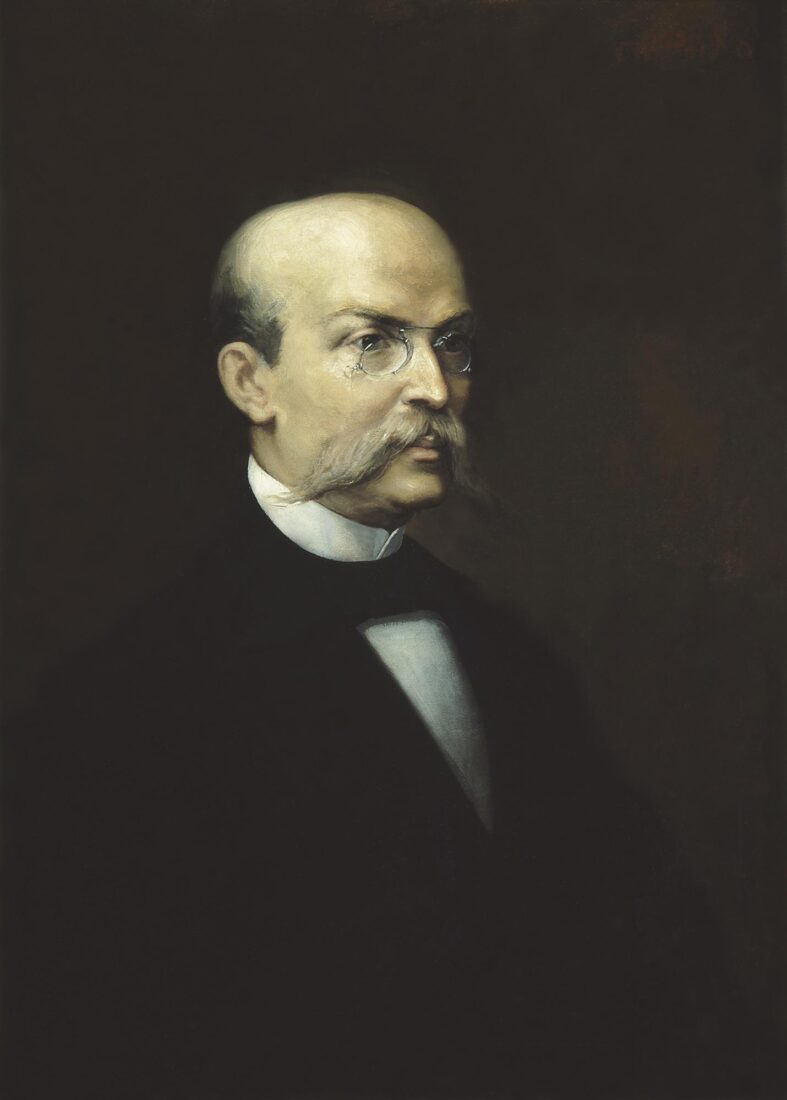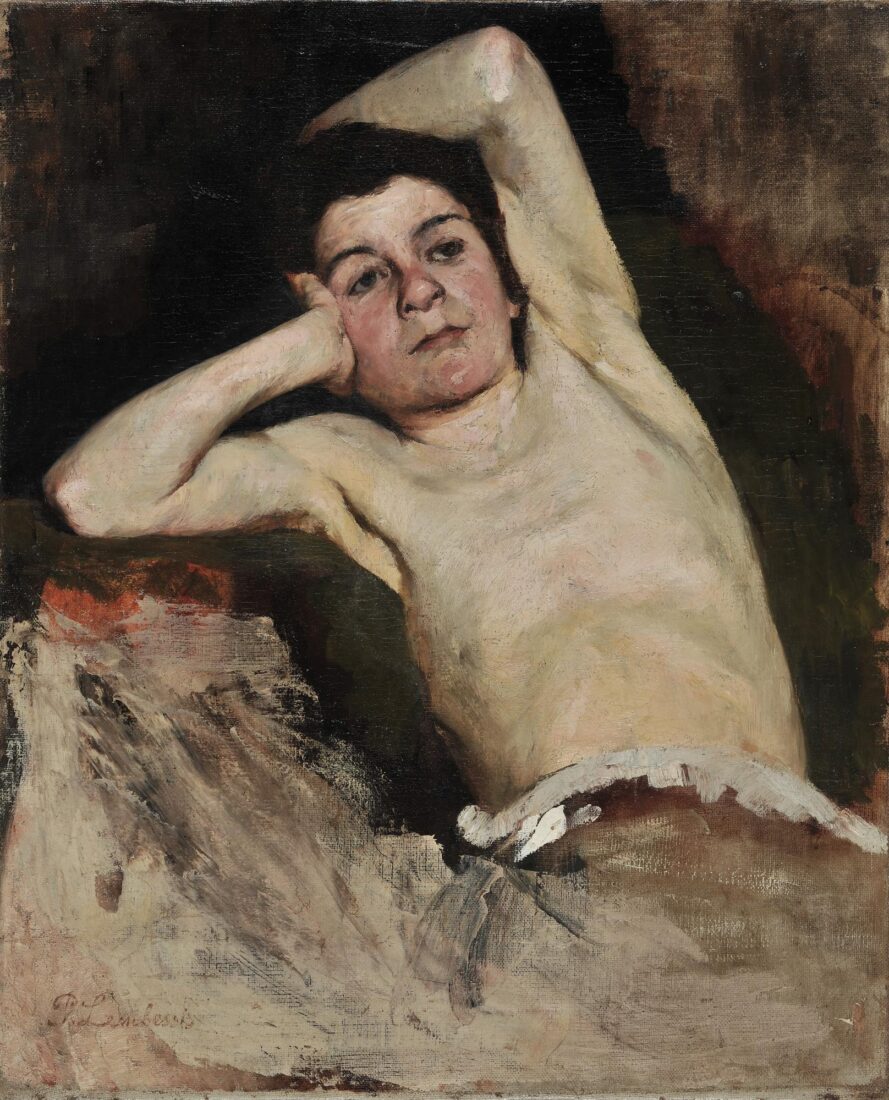


Architect Lysandros Kaftantzoglou was the very successful director of the School of Arts from 1844 to 1862. Moreover, he was the one who designed and built the Technical University. Nikephoros Lytras painted his portrait from a photograph, shortly after the architect’s death.
Serious and contemplative, the great architect is sitting slightly turned to the side in a luxurious easy chair, over which he has thrown his greatcoat with a certain nonchalance. He is facing the viewer but is in fact gazing towards infinity. The artist perhaps intended to suggest in this manner the scholar’s recent death. Nikephoros Lytras here proves himself a penetrating psychologist, true to his own saying that, “the portraitist must draw from his sitters what they feel in the depths of their souls.” The architect is holding a small book, his index finger marking the page on which reading was interrupted. His right hand rests on a table, on which are scattered bits of paper and other items, splendidly captured.
The painting is made in broad, assured brush strokes, with a gentle palette of brown-red, along with grey-green, ochre, black and some white. Note the red scarf in the pocket of the greatcoat on the chair. With its monumental size, this painting is one of the most imposing portraits in the 19th century.






A poet, musician and painter who studied in Italy, Georgios Avlichos, the Cephalonian artist who created this masterpiece, was completely removed from the academic tradition of his times. There is something poetic and eerie about the atmosphere in his works; an almost metaphysical aspect, heralding de Chirico and Balthus, a contemporary painter. Another characteristic quality that set Avlichos apart from other artists of his period is that he steered clear of the brown asphalt employed by academic painters, painting instead in clear and bright colours.
What is it that the young Roubina (for her name is known to us), the daughter of Ioannis Gerasimos Kavalieratos, is gazing at through the open window of her country house at Vlachata, Sami? She is gazing at the blue sky in reverie, and the little white dog she has in her arms seems equally absorbed by the same vision, invisible to us. Her ethereal white dress, painted in light lilac and ochre hues, contrasts with her black fan and loose, crow-black hair. A sea breeze, the scented zephyr of the Ionian Sea, blows on the girl’s hair, scattering the petals of the red rose in it. Can it be that this scattering of the rose petals is a symbolic allusion to the fleeting youth, torn apart like a rose by time?


Nikiforos Lytras produced certain imposing, full-body portraits of ladies of the upper-class Athenian society; these works are distinguished by their refined elegance. The lady in the white dress and the long gloves poses against a flat white background, painted in a similar way to her white dress, that is, with brushwork of a subtly changing white, mixed, according to an impressionist principle, with some yellowish ochre in the bright areas, and with a light mauve, lilac, in the dark ones. These two complementary colours make the white colour iridescent and vibrant. The only dark tones in this extraordinarily painted symphony of white are the lady’s brown hair, the lilac bouquet and the black fringes of her umbrella.











A talented artist, Ioannis Zacharias died at an early age. He left few yet high-quality works. The boy portrayed in this painting is most probably a student at the School of Arts, as it was possible to enrol at a very young age at the time. The interior in which he is seated is encircled by paintings and frames, while at his feet there is an open folder, from which he has taken out a drawing and examines it. This is a seminal work. First of all, for the seriousness with which the artist regards art education at such an early age. Moreover, it is also a work of artistic importance. The light entering through the window on the left caresses the forms and softens the outlines. Neither sharpness nor hard lines are anywhere to be seen. The colours strike beautiful and original harmonies in ochre, green and brown. It is a work of silence and recollection, expressed both through its subject and the plastic means used to interpret it.

